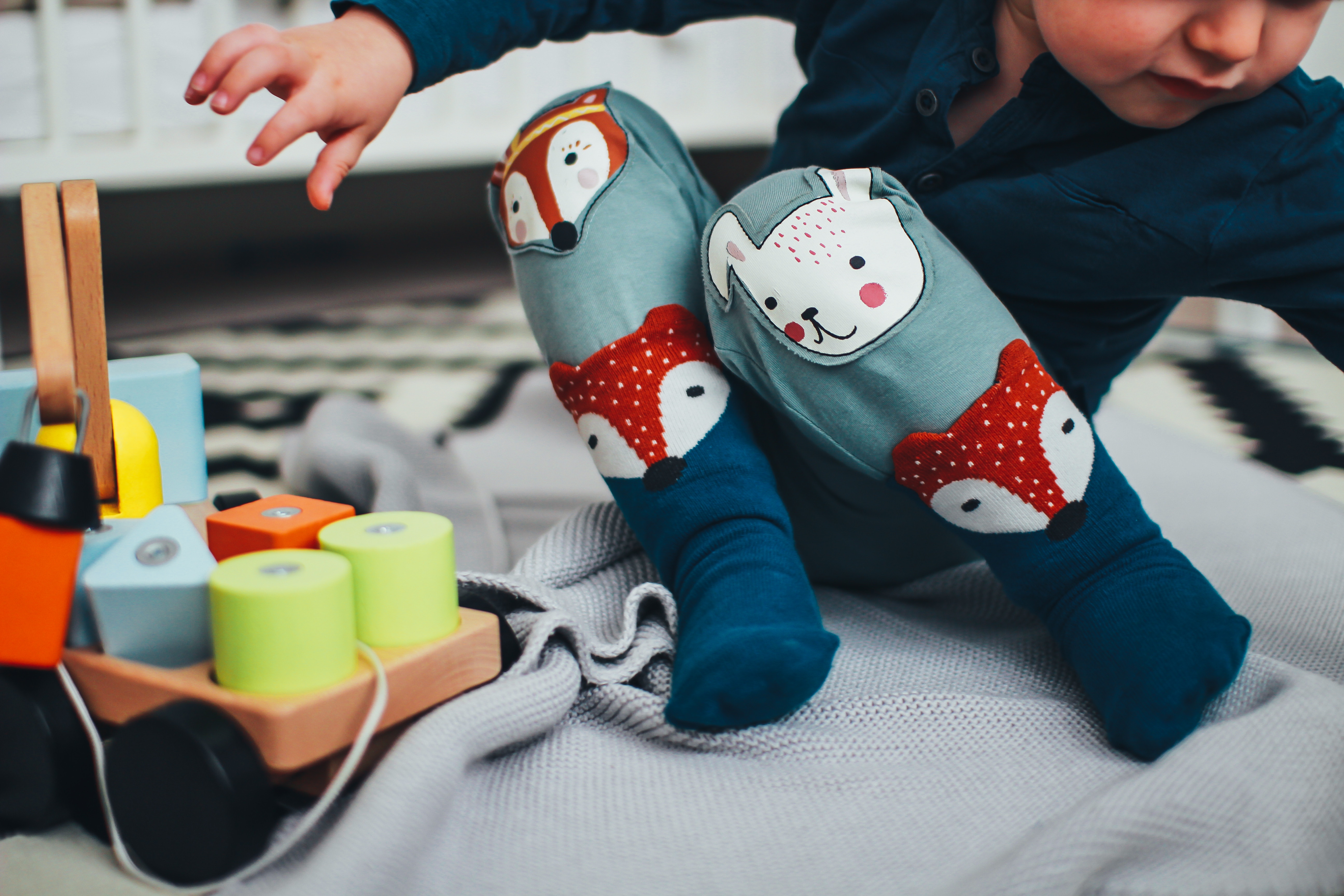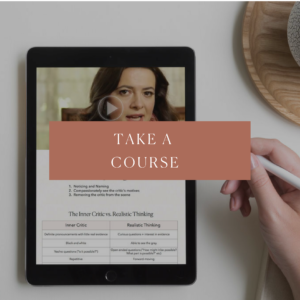The other day, my son was playing with a Lego train set he received as a gift. It’s an assortment of Legos, but it’s meant to build a train with, and it includes various train parts – bases for each train car, a Lego caboose, a front car with a chimney and a seat for a driver.
He was building a train, ordering the cars to his liking, making Lego towers atop each car, and of course, carefully deciding where he would place the Dalmatian dog.
When the Legos were all used up, he walked across the room, grabbed a bin of blocks, and said, “Now I’m going to build another train.”
I listened as he explained to me the large rectangular blocks were cars, the cylinder blocks were wheels, the other blocks were things I didn’t quite understand but were part of his elaborate train scene.
All put together, the thing hardly looked like a train at all, but – compared to the more literal train made of Legos – it was far more interesting to look at, and took far more creativity from him to create.
In watching him, something struck me: in his mind, the regular set of blocks was just as good a toolkit for building a train as the other set with all its specific train parts. Absolutely just as good.
I was surprised to notice my kneejerk reaction. Even though I’m someone who loves creativity and does creative work every day, and thinks about how to nurture creativity in my kid, I needed a minute to catch up to what he was thinking. I was in the mindset of, “that thing over there is the train set, this thing is the block set.”
He didn’t hold the belief that one of these was the set for building trains and one of them wasn’t. He didn’t yet have years of images of trains that tell him a train is this but not that. And most profound of all, he didn’t have the messaging we all get: that there is a better way and a worse way to build a train.
He was operating with a sort of absence of beliefs, stories, rules, without the conditioned understanding of context adults have every time they look at or encounter any object, any word of speech from another human being, any thought of their own.
That freedom from context allowed him to be more creative.
That is true for all of us. We become creative when we find a way to forget our beliefs, stories, rules, about what’s supposed to happen – on the blank page, or in the presentation, or in the program design, or in the conversation.
If we can’t forget, we can at least suspend our ideas about this, and happily and deliberately let them slip away, to let something new come through. We forget how we are supposed to do it. We pretend there is no right way.
Forty years ago, someone had to forget the “rule” that computers were for business use, in order to envision the “wild idea” that people might keep them for personal use. Someone had to forget the convention that cars were bought and owned, in order to envision that people might share cars and book them for a few hours at a time, as they now do through the many car-sharing programs that exist in every major city. Someone had to forget the tried and true and universal “rule” that a publisher was needed to help an author create a book, in order to envision self-publishing.
Someone had to see the rule that only land-owning white men could vote, not as a given, but a constraint that could give way to something different. Someone had to unknow, or unlearn, the rule that children should be seen and not heard, in order to imagine a different kind of parenting, and a different vision of childhood.
On a practical level, the challenge for women in particular, is that the rules that surround us were not shaped by us. By this I mean both the legislated rules and the cultural “agreements” – the assumptions, norms and conventions that we live with. They were formed largely from a masculine perspective, with all the strengths and weaknesses, the bright lights and the blind spots, that come with that. They were formed at a time when that masculine perspective operated with an even more complete marginalization of the feminine than it does now.
So here we women are, having had a lifetime of absorbing rules and agreements that are not what we would have created, not what matches what we experience and not what we know inwardly – even as we constantly confront that alien culture outside of us.
This makes the work of our forgetting the rules, the norms, the narratives of how it needs to be, both harder and more imperative.
We’ve got to set aside the conditioning we’ve absorbed, let it go and send it to some far away place. We’ve got to suspend the assumptions – the particular ones – about how we need to look and what to eat and how to be a mom and how to be a wife and what it means to lead. We also need to suspend the bedrock assumptions that permeate the fabric of our society – what are humans here for? what is my responsibility to others? what should a civilization give, and be?
Sometimes, some blessed times, we don’t need to forget because sometimes, we are like my son and we have the gift of never having learned the rules for the thing we want to do. If you are approaching a new subject, entering a new industry, doing a new kind of project, or trying to create something novel of any kind, you have this opportunity. You might think you have a particular deficit of training or qualifications, but I would urge you to see if that absence is a kind of gift, that allows you to come to the work with a fresher perspective. When you know fewer of the world’s rules and conventions about how things get done, you’re freer to invent and skip straight to the more evolved way, without having to untangle yourself from old limited thinking.
So suspend the rules of how it’s supposed to be done. See where you’ve been blessedly untrained, and make the most of that gift.
And from there, make something brave and new.
Love,
Tara
photo credit: Daiga Ellaby








Thank you Tara. I get a number of newsletters but few that make me want to write a thank you note. This is a powerful essay
Thank you Tara. You have also made a compelling case for why, when we seek creativity/innovation in system change for example, we need to seek the involvement of those outside of the system in order to gain from their perspective – free of the rules, norms and narratives that envelop us (the “insiders”).
Thank you!
Kari
Right on! Thank you, Tara, for shining light on an important life lesson/reminder for all of us. The celebrated artist, Pablo Picasso, was quoted as saying, “It took me four years to paint like Raphael, but a lifetime to paint like a child.” I use this wisdom every day as I endeavor to LIVE like a child, with all the freshness, and frivolity, wonderment, and expansive, open-mindedness which allows for ANYTHING to be possible. Imagine the world we’d live in if all of us adults endeavored to live like a child! 🙂
This is one of those things that we know – on some important level – but forget again and again. Thank you for reminding me.
Hi Tara this article has opened my mind. It’s so simple way you demonstrated hats off to you.
Oh how fucking awesome it was reading this today, like conditioning, soothing balm right to where the ache was/is.
Thank you, thank you, thank you.
This is excellent advice to absorb, for some of us who are more deeply entrenched in our ways even more than others. And the children are our teachers, are they not?Thank you, Tara.
LOVE THIS
Thank you Tara
THAT was brave, and new! Great insight, thank you!
Wonderful!!! Thank you Tara. You always rock my world with your words, and the way you see beyond the norms. What a world it would be if there were no “normal” way, and instead there were innocent and free people who saw their own gifts expanding into the world around them.
Wow! I have not been able to articulate this thought yet, but here it is! This idea is the foundation of my 100 Day Project — where you commit to creating something every day for 100 days. Typically people choose a theme and mine is a 100 days of Letting Go. I feel like I am my biggest barrier to my creativity — that I am holding on to beliefs that no longer suit me. And the letting go is working! Thanks for this.
Hello Tara:
I absolutely agree. As an artist (and scavenger!) playing with collage and card-making, in all the “upcycling” and re-purposing and “intentional misuse” in a kind of “arte povera,” again and again I realize how deeply the most seemingly trivial–or even illogical! assumptions and judgments are embedded in our minds.
Your insight demonstrates how great revelations can surface in the safe spaces and times of such “free play.”
Unfortunately, if even at the level of “artsy-craftsy” we encounter resistance and “ignore-ance” from within and without…how can we begin to imagine how much, how powerfully, our fears of social and economic rejection are blinding, binding and gagging, and chaining us?
That’s the problem, unfortunately, with your final call (and mine!)–we’re raising the stakes, raising the jumps, upping the ante–and landing back in the dead muck of ideology and cliche.
Once in an art-ed curriculum class, I was among the students tracing their hands for primary art…Instead of just tracing palm-down, I suddenly flipped my hand palm up:
D.: You can do it from this side, too.
Instructor: Very few people do that, actually.
(Pause)
D: What does that mean?
(Pause)
Instructor: Uh….that you’re original…?
It goes that deep. It’s that simple…
Or in a published anecdote–not my own–a father tells his very young daughter that people are taking a course to learn how to draw.
The little girl is aghast.
“You mean they FORGOT?”
Donna
Fantastic teasing out of unconscious perspectives on ourselves, our lives, our world – your post is so illuminating! As a new grandmother, one of the things I am looking forward to the most is rediscovering the world through the eyes of my grandson (and being very careful not to get in his way).
Thank you for putting into words what I feel on the inside. What a beautiful way of saying that being untrained is helpful for doing things in a different way, outside of the standard rules, that it is a gift! thank you!
I hardly know how to thank you for this post. It is like a golden gift from the ether, and I read it while pondering a pivotal question: do I have the street creds to pursue my dream?
Thank you!
Thank you Tara!
Embracing “freedom from context”. That is brilliant!
Thank you Tara.
Goodmorning Tara, as an artist and a student of your facilitators training Playing Big I can only nodd with my head and say yes; it is not easy to go to that spot of ‘not knowing’ and work from there. And when I am brave enough to show the work that comes from that ‘not knowing spot’ then it is a great relief to be able to tap into my Inner Mentor and not listen to all the critics that my inner voices are shouting. Not knowing and vulnerability are so closely linked to each other and are a great basis for beautiful art! Thank you so much for your article. I will keep it in mind in case of doubt! Carine
Thank you, Tara. A wonderful reminder that so often we make things far too complicated for ourselves. Allowing ourselves to explore without boundaries and adherence to conditioning can often be a more rewarding creative process.
This is a great reminder that we can let go of our limitations and beliefs and create something new. It is so easy to get stuck in the rut of what is, but we will find good things when we step into something new.
Thank you Tara I love this insight so much. As someone who is relatively new to my industry it made me feel braver and stronger about putting my work out into the world. My son also loves building trains with block lego:-)